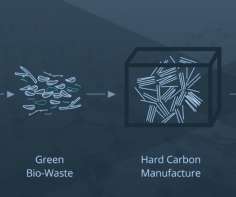Sparc Technologies, QUT partner to develop a hard carbon anode material from bio-waste for Na-ion batteries
Green Car Congress
SEPTEMBER 13, 2022
We will be targeting the production of materials for the high growth market of sodium-ion batteries which is displaying significant promise as an alternative to lithium-ion batteries. In performing due diligence on this project Sparc has reviewed a number of technologies in the battery space.















Let's personalize your content